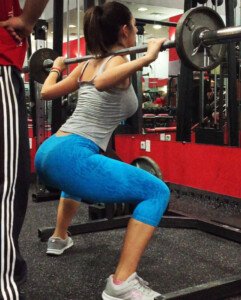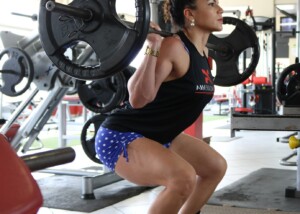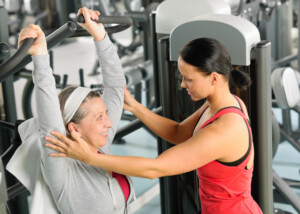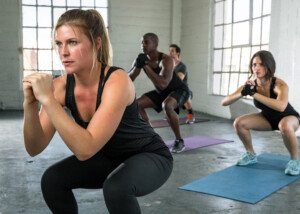If you’re a personal trainer who can’t figure out why a client can’t do a parallel bar squat, consider femur length — relative to torso length and also shin length — regardless of client’s overall body height.
Though study materials for personal trainer certification don’t mention consideration of femur length in program design, this is something a personal trainer should consider when implementing a strength training program.
My certification materials as well as CECs make no mention of femur length as they relate to efficacy of strength training exercises, but that doesn’t mean femur length should not be considered.
Suppose you’re new at personal training and have a client who can’t get parallel in a simple bodyweight squat.
Your first inclination is to blame lack of “heel flexibility,” since the client invariably is able to go parallel if they go up slightly on their toes.
You look at this, and think, “All she has to do is get the heels down on the floor, and she’s all set.”
Trying to squat parallel is a HUGE issue in strength training and the inability to squat parallel has causes other than the long femur.
Personal trainers need to look at femur length to rule this out, or in, as a variable.
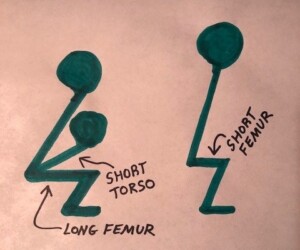
For example, have you considered that in order for the client to keep those heels on the floor, while maintaining the parallel squat, they’d have to dorsiflex their feet to such an angle that goes beyond normal dorsiflexion?
Granted, Olympic style lifters have striking dorsiflexion, but their training not only is far removed from that of typical client of a personal trainer, but the extreme dorsiflexion in Olympic lifting tends to be a product of beginning this training since youth.
I have seen personal trainers trying to get clients to squat parallel, and I could clearly see that their long femurs were part of the equation.
Personal trainers must design programs that accommodate the long femur, such as encouraging a sumo style squat.
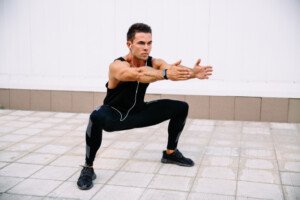
Freepik.com freepic.diller
Otherwise they’ll spin their wheels in an attempt to get their clients to straighten their back when squatting.
When designing a program for a client who has long femurs, the personal trainer should not fixate on back squats, but instead, help their client master a bodyweight squat first by implementing some adjustments, for instance a wider stance, working on increasing dorsiflexion and Achilles flexibility, hip flexibility and lower back strength.
Most clients simply want to lose weight and have a better looking body. The back squat is not necessary to achieve these.
The client with long femurs can achieve results with some dumbbell squats, overhead squats and front squats.
However, a person with long femurs can actually learn to go parallel with a back squat, but it will take some work.

